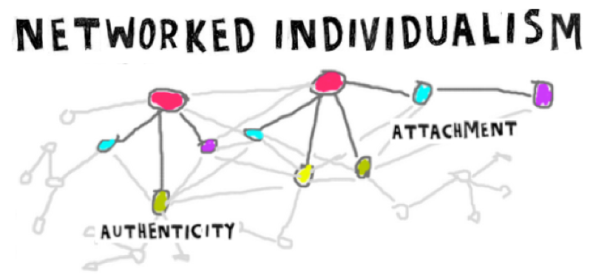whimsy {glossary}

whimsy matters.
(just trifold)
Self-reflection of anything compulsory is keeping us mediocre rather than breathtaking.
When you self-reflect on your gut, on your daily actions, because of your gut, that’s when we find out the thing you can’t not do. That’s when we find your art, the thing(s) that will make you indispensable.
What if we trusted you? – Jerry Michalski
Self-reflection. It’s not really healthy self-reflection if i’m talking to myself about what you told me to do.. what we need is 7b people with the bravery to change their mind everyday
That’s called time consumption. That’s called standardization.
Parents might say standards are good.. but not for their kid. Their kid is not mediocre.
We think success in a community might be evident, if you could stop anyone on the street and ask them, what do you want to be when you grow up, and the look you in the eye and respond with….
Whimsy does matter. Our souls crave it. We’re just afraid of the chaos, of the appearance of laziness/not sticking with it-ness.
Perhaps tech is here to help us with the chaos. To allow for chaordic communities. Where people are waking up everyday, to follow their bliss/mind wandering. Because that’s when we’ll tap into our most valuable resource.. the human spirit, fully alive.
Research proves that the most effective human learning actually takes place in the context of real-life experience, not in classrooms. More than 99 percent of what the average American now learns in a lifetime is not learned in any classroom.
As the growing unemployment of our most schooled workers demonstrates, academic success is at best irrelevant and may even be harmful to working productively in the real world. The exploding information base and intelligent tools of the modern economy make thinking skills far more important than the memorization of facts or rote exercises. And, in contradiction to the one-dimensional notion of academic “aptitude” that’s valued in the bogus currency of measures such as IQ or SAT scores, people have at least seven independent kinds of intelligence, or talent, and a dozen or more distinct yet effective “styles” of learning.
But schooling is still necessary for “socialization,” right?
Nope. Research shows that many if not most of the actual socializing effects of schools are harmful: The losing majority of students get wounded self-esteem, while the “excellent” few percent of students get a false sense of superiority and security.
http://www.wired.com/wired/archive/1.01/hyperlearning_pr.html
________________________
whimsy as
Most recent studies depict mind wandering as a costly cognitive failure with relatively few benefits (Mooneyham and Schooler, 2013). This perspective makes sense when mind wandering is observed by a third party and when costs are measured against externally imposed standards such as speed or accuracy of processing, reading fluency or comprehension, sustained attention, and other external metrics.
Daily life often demands that we choose one information stream or the other. For instance, in a decontextualized educational context, or in a cognitive psychology experiment, the ability to concentrate on a task requires silencing the inner chatter. Vice versa, when we would like to dip into our inner stream of consciousness, we must block out our external percepts (Dehaene and Changeux, 2005; Smallwood et al., 2011b; Kam et al., 2013).
However, as Kam et al. (2013) point out, when the executive attention network works in concert with the default mode network to sustain an inner train of thought, selective attention processes are not absent – they just are turned inward to select the most relevant associations and ideas that emerge from episodic memory. This has important implications, because traditional views of selective attention erroneously assume that the main function of the executive attention network is to select relevant stimuli from the external environment for deliberate, conscious processing.
However, these traditional models miss a key feature of human cognition: when working in cooperation with the default mode network, the executive attention network is equally equipped to select relevant episodic associations that can help keep an inner stream of thought both positive and constructive.
perhaps where we get true.. grit/sustainability..
_________________________

www ness
__________________________
imagining a trail.. left by your wandering whimsy.. interconnectedly intertwined with the rest of us..
_________________________

























